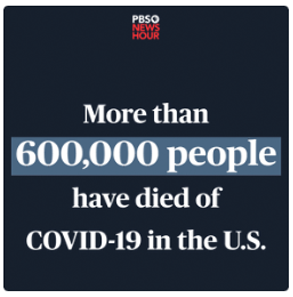Radar on Medicare Advantage
-
Against Industry Grain, Commenters Sound Off on ‘Sound’ MA Payment Proposals
Since CMS proposed a modest rate increase and substantial changes to the risk adjustment model used to pay Medicare Advantage plans, insurers and their allies have come out swinging with very public responses. Industry-aligned Better Medicare Alliance (BMA) has been particularly vocal about its opposition to the proposals, spending $4.4 million on an ad campaign urging seniors to call the White House in opposition to potential MA cuts and commissioning a study estimating the detrimental effect the proposed changes could have on premiums and benefits. And while a recent BMA press release highlighted the formal comments submitted by dozens of groups urging CMS to delay the proposed changes, industry experts including scholars, policy experts and former CMS administrators have come out in support of the proposals they say address only some of the problematic practices in MA.
-
President’s 2024 Budget Sneaks in New MLR Requirements for MA, Medicaid Plans
President Joe Biden’s fiscal year 2024 budget proposal, released on March 9, made headlines for its efforts to preserve the Medicare Trust Fund with proposals seeking to expand the number of drugs eligible up for negotiation between Medicare and pharma and extending a $35 insulin cost-sharing cap in Medicare to commercial plans. Beyond the headlines, however, the budget includes several items targeting Medicare Advantage and Medicaid insurers, such as a proposal to establish new medical loss ratio (MLR) requirements for supplemental benefits in MA.
Largely seen as a wish list, the president’s budget hinges on whether he can convince a divided Congress to put the proposals into legislation. “Many of the proposals ultimately offered in the President’s budget are likely to turn out to be more ‘headline’ than reality,” suggested Citi analyst Jason Cassorla in a recent research note. “While we are not completely dismissive of the White House’s efforts to shore up Medicare, we view the implicit savings constructs (without cutting benefits) and redirection to Medicare as more of a messaging document at this juncture.”

-
Study Suggests Part D Payers’ Prior Authorization Policies for New Drugs May Be Too Strict
Most new drugs covered under Medicare Part D are subject to prior authorization (PA) requirements, largely due to their high launch prices. A recent study published in JAMA Health Forum observed that these policies are frequently inconsistent across payers and may prove too burdensome for patients and providers.
Researchers identified drugs approved between 2013 and 2017 and reviewed the 2020 formularies of the eight largest Part D payers, which cover about 90% of all Part D beneficiaries. They compared PA policies to each drug’s FDA-approved indications and noted if payers mirrored the approved labeling or were more restrictive than the drug’s label. Researchers observed substantial variation in the frequency and type of PA across payers, and they found that about 40% of the new drugs had PA criteria that went beyond the drug’s labeling.

-
MAOs Focus on Helping Members Understand the Benefits That Attracted Them
As the Medicare Advantage program saw slower enrollment during the 2023 Annual Election Period than previous years, many insurers that enriched their benefits while maintaining affordability and effectively communicated these changes saw above-average growth. AIS Health, a division of MMIT, spoke with several plans that credited their localized approach, enhanced relationships with sales agents and new supplemental benefits with helping to grow their membership over the AEP.
Meanwhile, during the Open Enrollment Period (OEP) that allows MA enrollees to make a one-time coverage switch and ends on March 31, insurers have been working hard to ensure a positive experience, hosting member welcome calls and events and educating members on how to use their new benefits. According to AIS’s Directory of Health Plans, MA enrollment from February 2022 to February 2023 grew by 7.4%, compared with 8.5% in the year prior.

-
As NC Nears Medicaid Expansion, State Official Has Strong Warning for MCOs
North Carolina at press time was close to passing legislation that would allow it to become the 40th state to expand Medicaid under the Affordable Care Act. The state transitioned to a Medicaid managed care structure in 2021, but recent public comments from one state official suggest that ongoing issues between MCOs and providers could pose challenges going forward as the state prepares for expansion.
House Bill 76, Access to Healthcare Options, would require the state to extend Medicaid coverage to individuals with income at or below 133% of the federal poverty level (FPL) starting Jan. 1, 2024, and establish a fund allowing the state to provide direct payments to acute care hospitals based on assessment of hospital costs. Democratic Gov. Roy Cooper has been advocating for expansion, which could reduce the uninsured population by 30%, or 346,000 people, according to an Urban Institute analysis from November.












